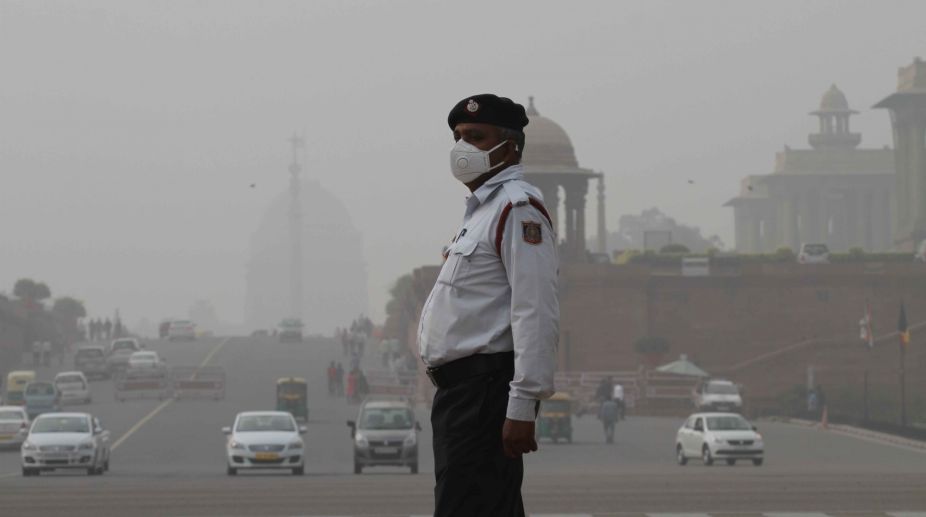The air quality of Delhi-NCR showed slight improvement on Saturday but the residents continued breathing toxins as the pollution levels remained at ‘severe’ for the fifth day in a row.
As per the data collected from the Central Pollution Control Board (CPCB), Delhi’s average Air Quality Index (AQI) at 3 p.m. was 423 (on a scale of 0 to 500) while the PM2.5 (particles with diameter less than 2.5) hovered around 422 units, considered “severe”.
The average AQI in Delhi-NCR combined was 425 with PM2.5 recorded at 424 units. Ghaziabad in Uttar Pradesh was the most polluted region in NCR by noon with its AQI calculated at 484 while its PM2.5 reached a dangerous 869 units — 34 times the safe limit.
“There has been some improvement. We are hoping it would get better tomorrow (Sunday). There are reasons behind this slight improvement — the biggest being no movement of trucks within Delhi. We are continuously monitoring the situation and will take decisions accordingly,” Environment Pollution Control Authority (EPCA) chairperson Bhure Lal told IANS.
He added that lack of sufficient public transport continues to be a serious problem while combating air pollution.
According to the System of Air Quality and Weather Forecasting And Research (SAFAR) initiative of the government, five out of its 10 monitoring stations across Delhi-NCR have recorded some improvement though the overall air quality was still severe.
SAFAR, however, predicts improvement in the air quality of Delhi-NCR from “severe” to “very poor” on Sunday.
Earlier, India Meteorological Department (IMD) also forecast improvement in the air quality here from Sunday onwards due to increase in the wind speed and formation of western disturbance or rainy situation in the neighbouring states.
According to CPCB’s continuous monitoring of the emergency situation — that requires PM2.5 to remain above 300 units or PM10 to remain above 500 units for 48 hours — Delhi at 11 a.m. on Saturday saw drop in particle pollution for an hour.
However, PM2.5 that dipped to 298 and 296 units between 11 a.m. and 1 p.m., again went up beyond 300 units towards the afternoon.











